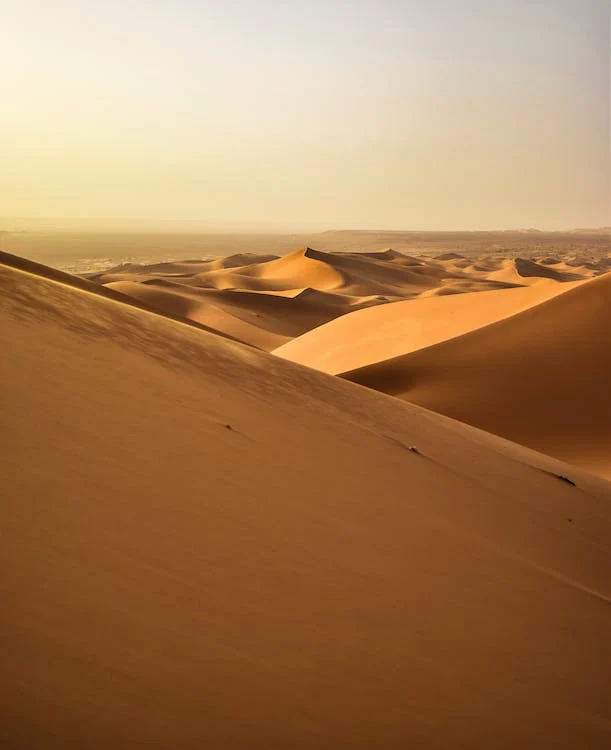SAFARI HABITATS | SAFARI COUNTRIES | SAFARI GUIDE | SOUTHERN AFRICA WILDLIFE PARKS AFRICAN ANIMALS | AFRICAN BIRDS | AFRICAN TREES | SAFARI LODGES |AFRICAN SAFARIS | SAFARI PLANNER | WILDLIFE SAFARI REQUEST
If you think of deserts, the first thing that would come in mind is the vast land covered with sand and nothing but the hot sun and other animals and plants capable of living in these extreme conditions. This dry and barren land makes up one-third of the Earth’s entire landmass.
The desert is more of a general term for places that have little precipitation, meaning it frequently rain, snow, or hail in these places. It includes the typical sand deserts that most of us know, as well as polar deserts, which are a vast, cold, and icy area like in Antarctica.
Despite its inhabitable-like appearance, the desert is home for hundreds of species of animals and over two thousand species of plants.
Africa is the home for the largest desert in the world, along with several others, which we will discuss further in the article.
What are the significant deserts in Africa?
There several notable deserts all around the globe, in which Antarctica is the continent with the largest desert followed by Africa.
Here are some of the most significant deserts in Africa:
• Sahara Desert
The Sahara desert, also known as the Greatest Desert, is probably the most famous hot desert around the globe. It also holds the record for the largest hot desert in the world, which covers a total of 9,200,000 square kilometers of the landmass in the African region. The overall size of the Sahara increases over time, and it was 10% larger compared to its size years ago, due to natural and unnatural climate change.
• Namib Desert
The Namib desert is a coastal desert located in South Africa. It is also one of the largest deserts in Africa, although its size is incomparable with the Great Sahara, wherein the Namib desert has an area of 81,000 square kilometers. So it would need roughly one hundred ten Namib deserts to equal the size of Sahara. However, the Namib desert also has its milestone for being regarded as the oldest desert in the world. It also has significant sand dunes that are one of the highest on Earth.
• Kalahari Desert
The Kalahari desert is second to the largest deserts in Africa, with an area of 900,000 square kilometers. It has an extreme temperature, especially during summer, when it can reach 45 degrees Celsius, while it can drop as low as minus 15 degrees during winter. The Kalahari desert qualifies more as a semi-desert since it receives more than ten inches of rain per year.
Notable animal species located in African deserts
Despite the extreme conditions on these barren lands, some animals can adapt to the intense desert climate. There are a few hundreds of animal species residing in the desert, ranging from mammals, birds, reptiles, and insects. Here are a few:
• Camel
Two kinds of camels live in deserts, the Bactrian Camel with two humps and the Dromedary Camel with one hump. Both species are common animals in desert places, especially as a mode of transportation for food, resources, and of course, humans. Camels are most common in deserts in the Middle East, but you can also find these magnificent creatures in the hot deserts of Africa.
• Mountain Lion
The Mountain Lion, also known as Cougar, are carnivorous animals often found in the mountains, and caves. It catches its prey using its powerful legs and sharp claws, then finishing them off by crushing their necks using its forceful teeth.
• Coyote
The coyote is a species of the genus Canis, which belongs to the dog family. Its appearance is similar to a collie dog, although coyotes have less fur and mainly distinguished by its round tail. This animal has a shy nature and is afraid of humans. Although with constant contact with the urban places, its attitude towards humans is getting bolder, which resulted in some incidents where coyotes attacked humans.
• Rattlesnake
Rattlesnakes are one of the most-known venomous snakes all over the globe, and it’s also one of the few reptiles that can live in the desert. Its appearance is pretty common, due to its triangular-shaped head and its jointed rattles on the tail.
NAMIBIA
• Namib-Naukluft Park
• Skeleton Coast
OTHER VEGETATION ZONES
Arid Area| Savannah Woodland | Savannah Grassland | Fynbos | Indigenous Forests | Swampland

